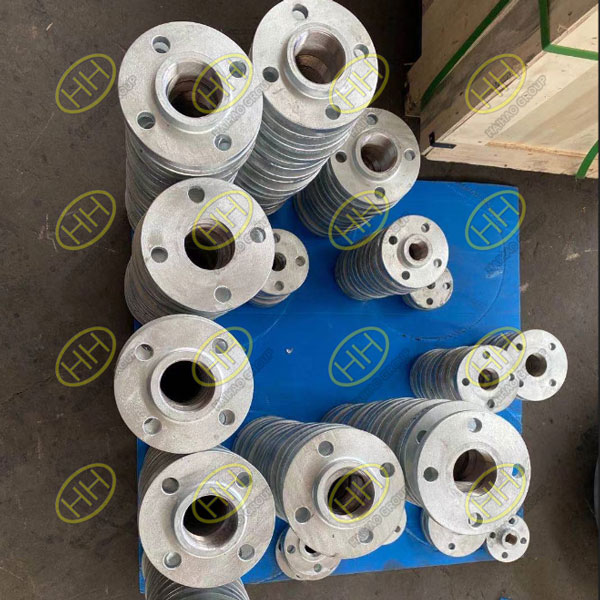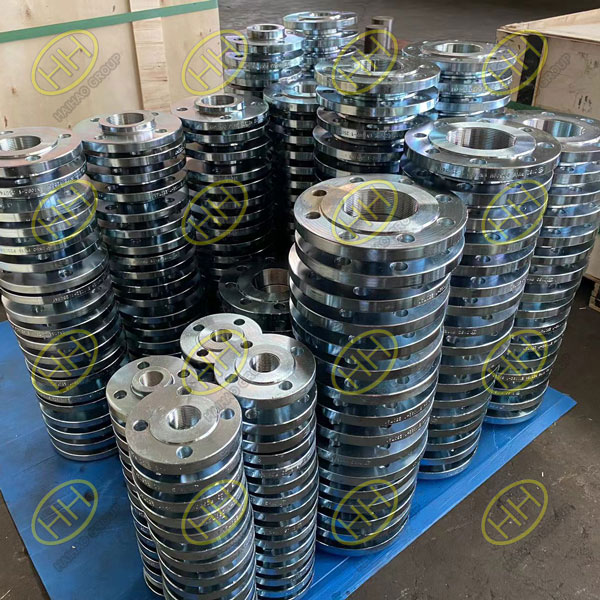Types of galvanized
We received an inquiry from a UAE customer today.The inquiry content is about small size blind flange, and the customer requires galvanized flange surface. Today, let’s learn the types and differences of galvanized.
Galvanized refers to the surface of metal, alloy or other materials coated with a layer of zinc to play a beautiful, rust prevention and other surface treatment technology. Zinc is soluble in acid and alkali, so it is called amphoteric metal. Zinc hardly changes in dry air. In moist air, the surface of zinc will form a dense basic zinc carbonate film. In the sulfur dioxide, hydrogen sulfide and Marine atmosphere, zinc corrosion resistance is poor, especially in the atmosphere of high temperature and humidity containing organic acids, zinc coating is easy to be corroded. It is mainly used to prevent the corrosion of steel, and its protective performance is closely related to the thickness of the coating. The protective and decorative properties of zinc coating can be significantly improved after passivation treatment, dyeing or coating with gloss agent.
Galvanizing is mainly divided into hot galvanizing and cold galvanizing.The difference between hot galvanizing and cold galvanizing:

Hot dip galvanizing flanges
1.Different definitions
Cold galvanizing is also called electric galvanizing. Cold galvanizing coating is mainly anticorrosive through the electrochemical principle. Therefore, it is necessary to ensure the full contact between zinc powder and steel and generate electrode potential difference, so the surface treatment of steel is very important.
Hot dip galvanizing is to immerse the steel parts after rust removal into the zinc liquid melted at about 500℃, so that the surface of the steel parts is attached with zinc layer, so as to play the purpose of anticorrosion.
2.Process is different
Cold galvanizing using electrolytic equipment fitting after degreasing, pickling into the composition of zinc salt in the solution, and connect the cathode electrolytic equipment, across the tube placed zinco, connected to the anode electrolytic equipment, power supply is connected using current from the positive to the negative directional moving deposits a layer of zinc on the pipe fitting, galvanized after cold is plated fittings processing.
Hot dip galvanizing process: finished product pickling – washing – adding bath aid – drying – hanging plating – cooling – drug – cleaning – grinding – hot dip galvanizing completion.

Cold galvanizing threaded flanges
3.Characteristics of different
Cold galvanized is more environmentally friendly, the composition does not contain Ph, Cr, Hg and other heavy metals; The thickness is thin, the thickness of the electrogalvanized layer is generally only 20 ~ 30μm;
Hot dip galvanizing is the most widely used, the best performance price ratio; The thickness is large, and the hot dip galvanized layer is generally above 35μm, even as high as 200μm; Corrosion resistance is much higher than cold galvanizing.
We can choose the way of galvanizing according to the different use scenarios of the products. If you also need the galvanizing treatment of the products,please contact us.

